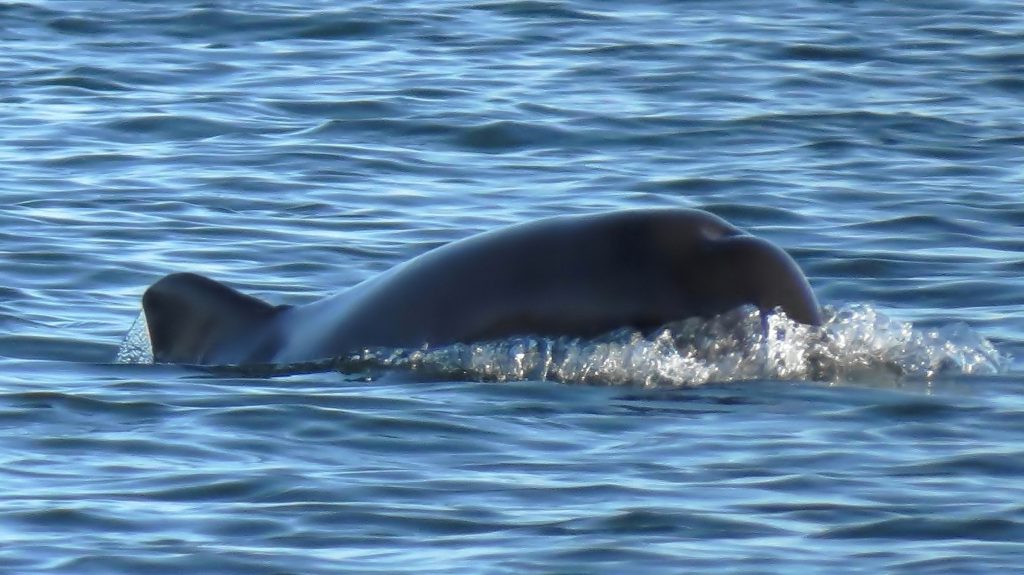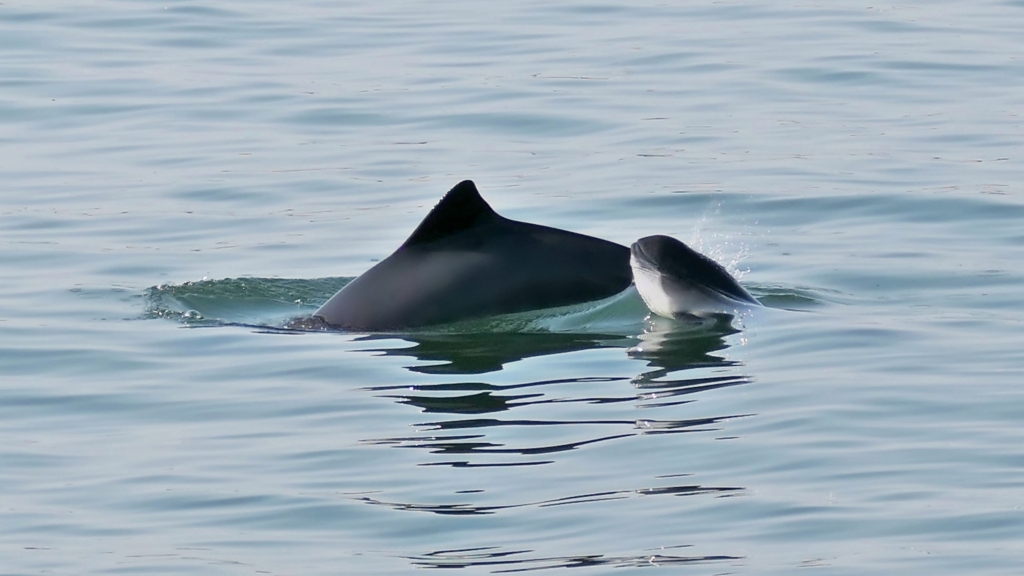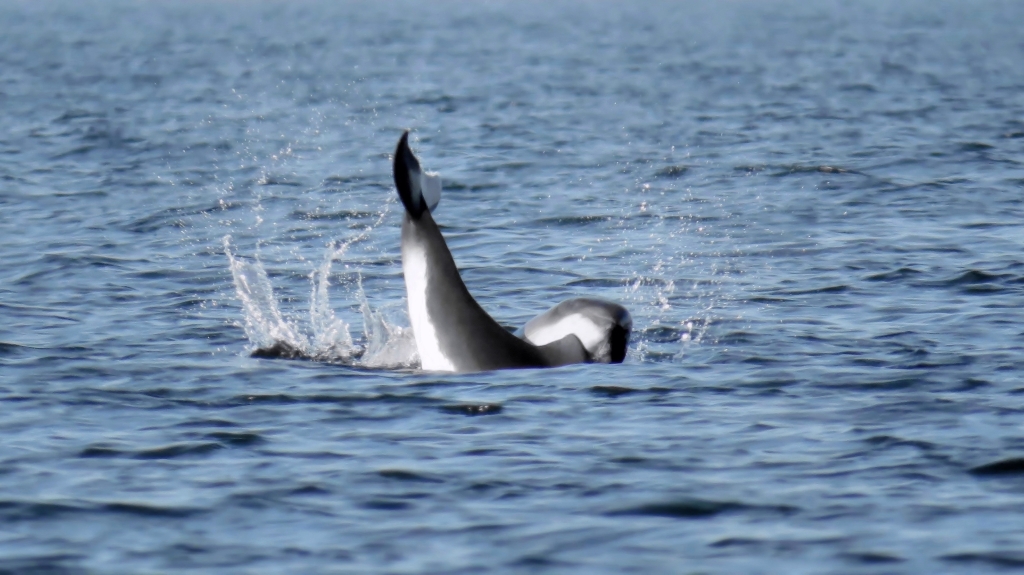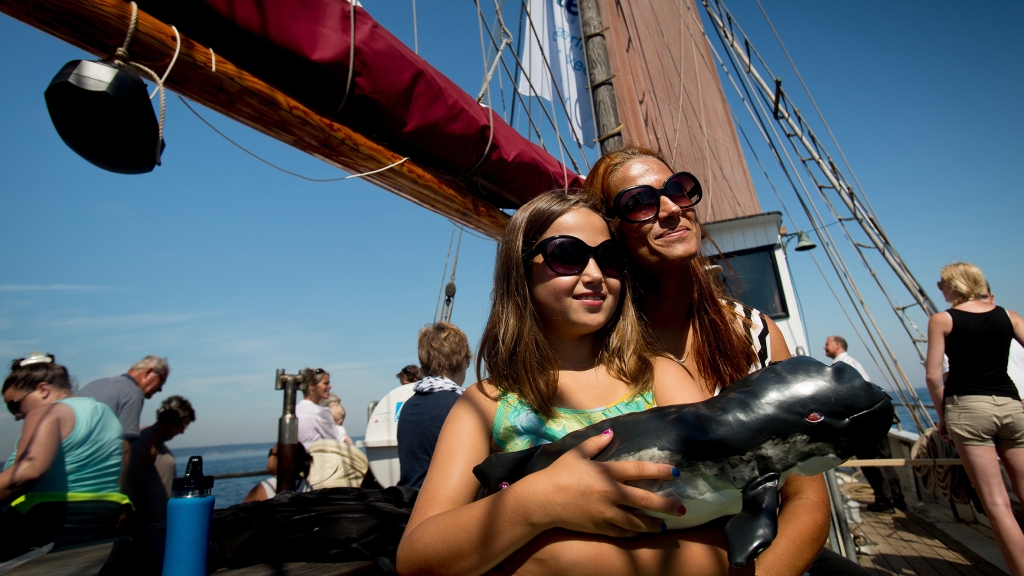Experience the Porpoise in the Little Belt
Get Closer to all the Porpoises who live in the Little Belt
The world’s first all access online listening station is available from Naturpark Lillebælt. Here you can hop aboard on YouTube or in the wheelhouse at the Lillebælt Shipyard and listen to the life under the sea. Learn more at Aarhus University
The Whale in the Little Belt
When one sits by the coast and looks out over the blank water, it can be difficult to imagine the diverse world and the impressive landscape living underneath the surface. Large plains with almost exotic plants, enormous valleys and mountain landscapes created from rocks and all kinds of shapes and sizes, and an animal kingdom so rich it is a rare sight – even on a global scale.
However, sometimes we might be lucky to get a glimpse of the story the strait hides, even though we stand above the surface. The Little Belt houses one the world’s largest populations of the little whale, the porpoise. And because whales retrieve oxygen from above water, we can sometimes just spot a glimpse of their dorsal fins and greet the world that lives under the sea.

The porpoise has always played a big part in the area, and it has an especially significant historical importance in Middelfart, since the porpoise hunt remained the primary source of income for a large group of people there for decades.
But despite the massive presence and the historical significance, we do not know a lot about the little aquatic mammal’s way of living in the wild. Compared to its more curious and playful cousin, the dolphin, the porpoise is both shy and more difficult to keep in captivity.
The porpoise normally lives in pods of 2-5 animals.
The male is fertile when it is 2-3 years old, the female when it is 3-4 years old, and a large majority of fertile females have one pup a year. The porpoise can live approximately as long as 20 years, but unfortunately, many die before this, due to getting caught in fishing nets, so they cannot get to the surface for air.

Swims Like a Torpedo and Hunts Like a Bat
The porpoise is a fantastic swimmer. The streamlined form, the smooth skin, and the powerful motor in the tail fin, makes it possible for the porpoise to shoot itself through the water.
Scientists have yet to measure the precise maximum speed, but they expect it can swim up to 10 m/s over shorter distances. For comparison, the human world record for 50 m freestyle swimming 2.4 m/s.
Like others whales, the porpoise uses click noises to hunt for food. Through echolocation high frequencies and very powerful sound waves, which the porpoise itself sends out, it easily locates both direction and distance of its prey, usually fish or squids.
It is only whales and bats who hunt this way, and because of the enormously efficient method to “see” in the dark and under water, it is something humans’ have studied for ages – most especially for military purposes.
From 1962-74, there was a NATO-station in Strib, where they studied porpoises and their use of what the researchers called bio-sonar. There are no traces of the work in Strib today, but at Middelfart Museum in “Henne Friisers Hus” they have an exhibit, which shows among other things, how NATO studied the porpoises in Strib.

Here you can Experience the Porpoise
Almost everywhere along the coast in Naturpark Lillebælt, there are good chances to see porpoises. Especially when the weather is warmer, and both smaller and larger animals seek into the shallower water. It is easiest to spot porpoises if the water surface is still, and one gets the best view, if one seeks higher ground compared to the water surface. Good places to spot them include Søbadet or Røjle Klint near Middelfart, Fredericia city or Østerstrand near Fredericia, and Stenderup Hage, Løverodde, and the inner fjord near Kolding.
Be considerate of the porpoises
When sailing the Little Belt waters, please be advised that your vessel may be a disturbance to the marine inhabitants. Porpoises, a small whale species, are abundant in the Little Belt, particularly in its narrow parts. And they use sounds as an important part of their life. Going faster than 5 knots, for example, may cause a disturbance to the whales. Studies show that underwater boat noise is particularly likely to have an impact on the behaviour and foraging patterns of these marine mammals.
Visits from Other Whales
The porpoise is the only whale in the Danish seas, but it is not a rare occurrence that we get a visit from other whales in the Little Belt. In December 2015, there was a dolphin in Kolding Fjord, and in February 2016, someone observed a dolphin just by the coast of Søbadet in Middelfart. In January 2022, a Sowerby’s beaked whale was spotted in Kolding Harbour.
Dolphins are popular, and observations of them often create quite the stir in both the press and on social media.
Other larger whales also occasionally swim by, but it is not as often we see them. Previously, there have been sightings of both fin whales, hump bag whales, and even blue whales, on a journey through the Little Belt.












